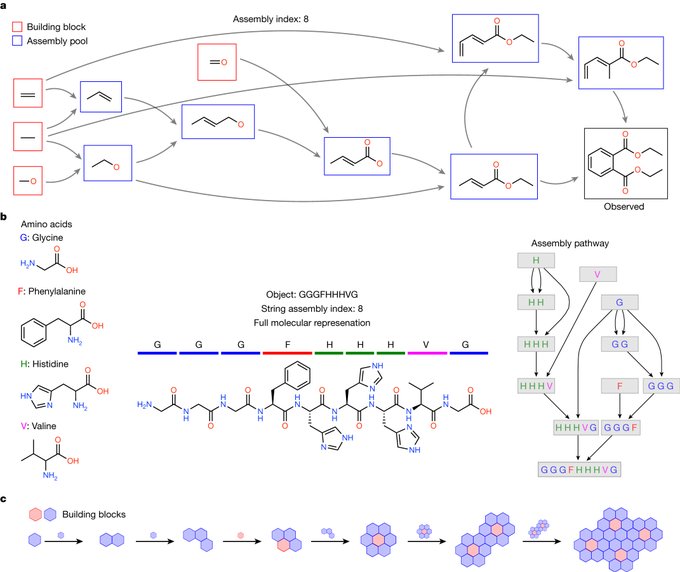
A quick thread on our @Nature paper on Assembly Theory. https://nature.com/articles/s41586-023-06600-9… 1/10 Assembly theory provides a new framework to understand selection and evolution that integrates physics and biology. It redefines objects not as particles but by their formation histories.

The value (“fitness”) of a given combination of building blocks often cannot be predicted by a summing up of values assigned to the component blocks. This nonlinearity (commonly called epistasis in genetics) leads to co-adapted sets of blocks (alleles) that serve to bias sampling and add additional layers to the hierarchy.
Jessica C. Flack • Worlds Hidden in Plain Sight: The Evolving Idea of Complexity at the Santa Fe Institute, 1984–2019 (Compass)
A closer look shows that the hierarchies are constructed on a “building block” principle: subsystems at each level of the hierarchy are constructed by combinations of small numbers of subsystems from the next lower level.
Jessica C. Flack • Worlds Hidden in Plain Sight: The Evolving Idea of Complexity at the Santa Fe Institute, 1984–2019 (Compass)
Some historic examples of amalgamation are the following. First, take heat and mechanics. When atoms are in motion, the more motion, the more heat the system contains, and so heat and all temperature effects can be represented by the laws of mechanics. Another tremendous amalgamation was the discovery of the relation between electricity, magnetism,
... See moreRobert B. Leighton • Six Easy Pieces: Essentials of Physics Explained by Its Most Brilliant Teacher
The Properties of Complex Systems We have few general design principles for adaptive components (cells, organisms, nations) in isolation or in the aggregate where new unforeseen properties emerge. Components typically have high failure rates in all tasks and accomplish their objectives through statistical averaging and approximation across multiple
... See more